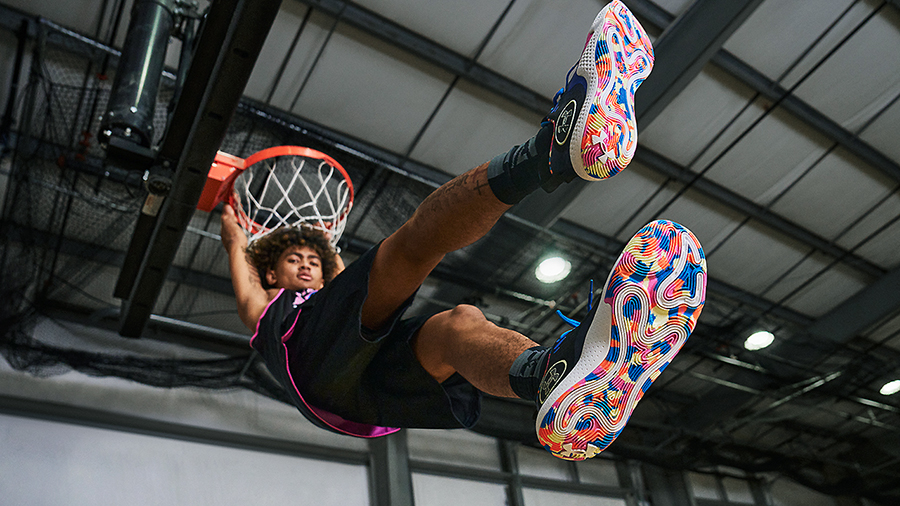J.P. Morgan lowered its rating on Under Armour to “Neutral” from “Overweight” due in part to elevated inventory levels that drive promotions across the retail marketplace and more direct competition from Nike and Adidas.
In a note on Monday, Matt Boss, J.P. Morgan’s lead analyst in the space, wrote, “While we see secular health/wellness and casualization tailwinds providing Sportswear sector insulation, Under Armour’s size/scale in relation to peers raises topline growth & margin risk, noting UAA historically has underperformed on revenue growth relative to the Sportswear industry & peers.”
Boss noted that on its February 8 call for the fiscal third quarter that ended December 31, Under Armour forecasted:
- Its FY23 gross margins would be at the high end of the previously provided 375-to-425 basis point range due to higher-than-anticipated Q3 promotional headwinds;
- Inventories would end its FY23 with 50 percent year-over-year growth, slightly higher than a planned increase in the mid-to-upper 40 percent. Inventories at the end of the third quarter were up 50 percent versus quarterly sales growth of 3 percent; and
- Promotional pressures from elevated inventory levels will last through summer/fall 2023.
However, Boss noted that Under Armour faces greater exposure than its larger competitors in the apparel category, dealing with excessive retail inventories. Apparel makes up about 70 percent of Under Armour’s mix.
The analyst further noted that while Nike expects to rebalance inventories by the end of its fiscal year ended May 31, Adidas told analysts on its quarterly call last week that its inventory levels are “something we need to work through in 2023,” potentially extending Under Armour’s efforts to rebalance inventories.
Adidas ended the year with inventories ahead 49 percent versus 1.3 percent quarterly growth.
Among other reasons for the downgrade, Boss sees Under Armour’s factory outlet stores facing heightened competition from the off-price channel that has benefitted from opportunistic buys in the elevated inventory marketplace. Under Armour’s store sales were down in the quarter, and 90 percent of its North American store sales come from outlet stores.
On wholesale, Boss noted that Under Armour officials called North America wholesale “the key wildcard” on its third-quarter call due to the lack of visibility caused by ongoing inventory reduction efforts.
Adidas’ comments on its fourth-quarter call last week see “a challenging order book for the second half” in North America that shows the recovery in wholesale orders may take time. Boss also noted that Adidas has a renewed focus on growing wholesale under its new CEO, Bjørn Gulden, and efforts to scale wholesale growth by both On Running and Hoka could weigh against Under Armour achieving increased wholesale penetration.
Boss also noted that Nike’s move to exit or reduce exposure to “undifferentiated” wholesale doors that began in 2017 had served as a “lateral tailwind” supporting Under Armour’s access to wholesale accounts. However, Nike’s moves to clean up distribution in North America have moderated.
Other reasons for the downgrade include expectations that long lead times will delay newly-reimagined Sports Style or more casual product from making an impact until FY25. Boss also said that while Under Armour had not provided guidance for FY24 margins, risks include:
- uncertainty around rebalancing inventory across the marketplace and related promotional pressures;
- remaining high labor and trucking costs; and
- apparel’s softness in the marketplace.
Finally, Boss said the next catalyst for the stock would likely not be until its Investor Day, scheduled for late 2023, when Under Armour’s new CEO, Stephanie Linnartz, is expected to reassess the brand’s long-term profit and sales targets. Boss noted that Under Armour underperformed its growth targets on its last Investor Day in December 2018.
J.P. Morgan lowered its price target on Under Armour to $10 from $13. On Monday, Under Armour’s shares closed at $8.24, down 67 cents, or 7.5 percent.
Under Armour started the year at $10.16; its 52-week range is between $6.38 and $18.18.
Photo courtesy UA
















